Wild Rift: how it is to play on iPhone 12 Pro vs. iPhone 6S
Wild Rift beta is out in the US – so how does it play on the newest and oldest iPhones?

Now that Wild Rift, the mobile version of Riot Games’ popular MOBA game League of Legends, has finally launched its open beta in the US, we’ve played enough matches on the fastest phones you can buy. But how does that compare to playing on the oldest phones?
We don’t have too many older Android handsets lying around, but we do have a 2015-era iPhone 6S, so we loaded up Wild Rift to see how the mobile battle arena (MOBA) plays on the low end of the iPhone compatibility spectrum. Its competitor? The latest iPhone 12 Pro, which tops our Geekbench 5 scores over phones like the Samsung Galaxy S21 Ultra and the Asus ROG 5 Ultimate.
While we’d love to get to a similar Android comparison soon, this is helpful for anyone still holding on to aging but still very functional Apple hardware. And the short answer is: your iPhone 6S plays Wild Rift just fine. Thankfully, Wild Rift has been well optimized to run on older phones without a noticeable difference in gameplay quality – fulfilling what Trent Campbell, Principal Technical Product Manager on Wild Rift, told TechRadar:
“We want to ensure players have a good experience playing Wild Rift on all supported devices, and we think it’s super important for Wild Rift to support a very wide range of them. For players using high-end devices like the iPhone 12, we want to wow them with incredible visuals and animations, but also ensure that the game is as accessible as it can be for those that don’t have access to high-end phones,” Campbell said.
But there are differences – here’s what you’re missing out on if you haven’t upgraded to a newer iPhone yet.
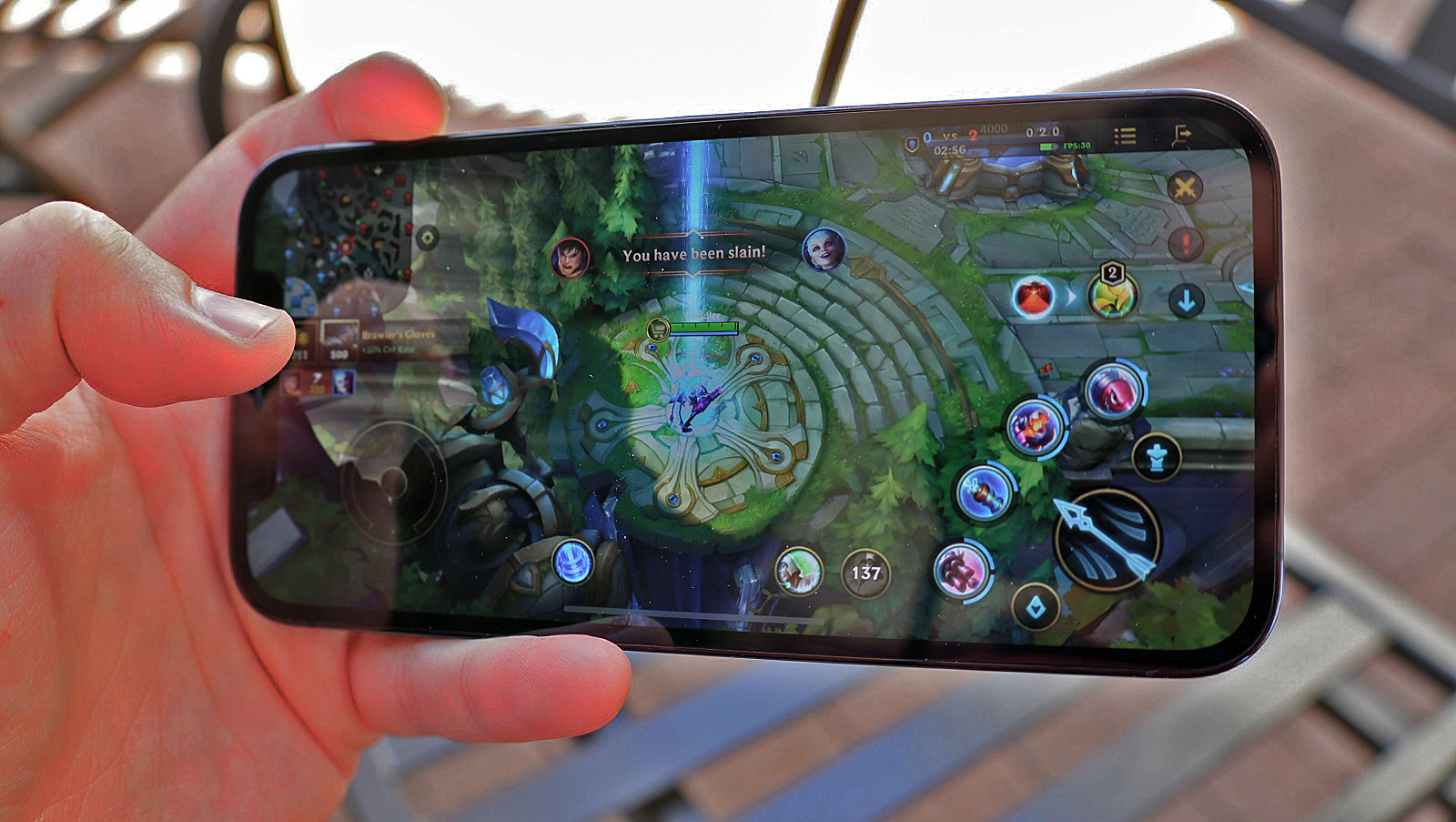
Was performance different on iPhone 12 Pro vs. iPhone 6S?
The good news is that performance didn’t differ much between the iPhone 12 Pro (running Apple’s A14 Bionic chipset with 6GB RAM) and the iPhone 6S (A9 Bionic with 2GB RAM). There were zero (and I mean zero) hiccups or slowdown periods of the older phone catching up to on-screen activity.
The only slowdown happened when we experienced low signal, and it happened on both phones. We tested both phones on signal/tethering and WiFi, with good (85Mbps down) and terrible (<5Mbps down) signal settings. Even with occasional (yet noticeable) lag spikes at that lowest end of the signal spectrum, we were still able to play full matches – though under 2Mbps brought them about every minute or so.
Sign up for breaking news, reviews, opinion, top tech deals, and more.
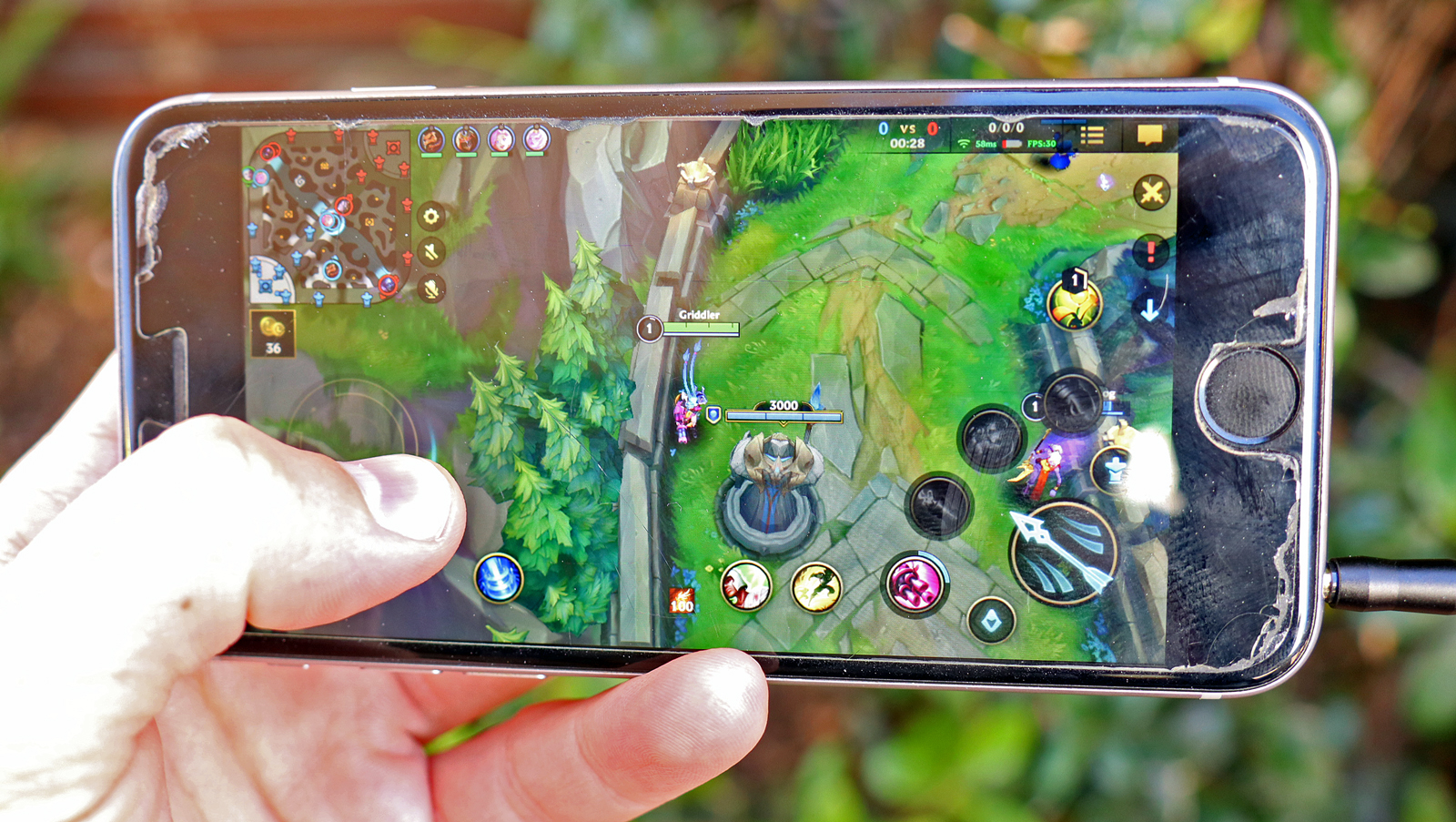
Wild Rift’s developers knew that adapting the game to mobile meant dealing with fluctuating signal, which will likely be a continual battle, so they’re constantly monitoring and “looking for ways to deliver a reliable and stable service while holding ISPs and mobile providers accountable as well,” Dawer Jung, Live Operations at Wild Rift, told TechRadar over email.
“It's hard to put a single number against connection speeds as everyone's situation differs (you could live alone on Wi-Fi, or with 5 other people), but we’ve optimized Wild Rift to a point at which very low bandwidth connections can still play the game reliably,” Jung said. “We have players successfully playing on old 2G networks, for example.”
Graphically, the iPhone 12 Pro does animate smoother character models and world textures. Much like our prior test comparing Marvel Realm of Champions graphics on old and new iPhones, Wild Rift’s champion models do have the slightest pixel-grained edges while playing on an iPhone 6S.

But given how small everything is on Wild Rift’s gameplay screen – lots of enemy minions, champions, towers, and in the heat of battle, a ton of brightly-colored ability effects – there’s no effective graphical downgrade while playing on an iPhone 6S in a match. At the most, you’ll notice those pixelated edges when examining 3D character models in champion select screens.
This is a testament both to Apple’s enduring hardware and the game itself: Riot has spent over a decade optimizing League of Legends to work on very low-specced machines (and developed an art style in which every object and champion is distinctive), so it’s not surprising to see the same with Wild Rift. It’s a balance between wowing players on top-end hardware like the iPhone 12 Pro while keeping the game playable on an iPhone 6S, with consistent framerates near 30fps on the latter, Campbell said.
“We do optimize the game where possible – for instance, we optimize layers in champion materials on low-spec devices to ensure frame rate stability, as we know that in a game like Wild Rift, performance is the most important factor when you’re in the middle of a hectic teamfight!” Campbell said. “We default certain graphics settings like VFX, FPS, and screen resolution on older devices with a few settings that cannot be changed depending on the device grade.”
“We've done significant testing on what the hardware can support to tailor the defaults for the best experience. From there, players are able to tune other settings to suit their preferences in order to achieve the optimal trade-off between performance and quality,” Campbell said.
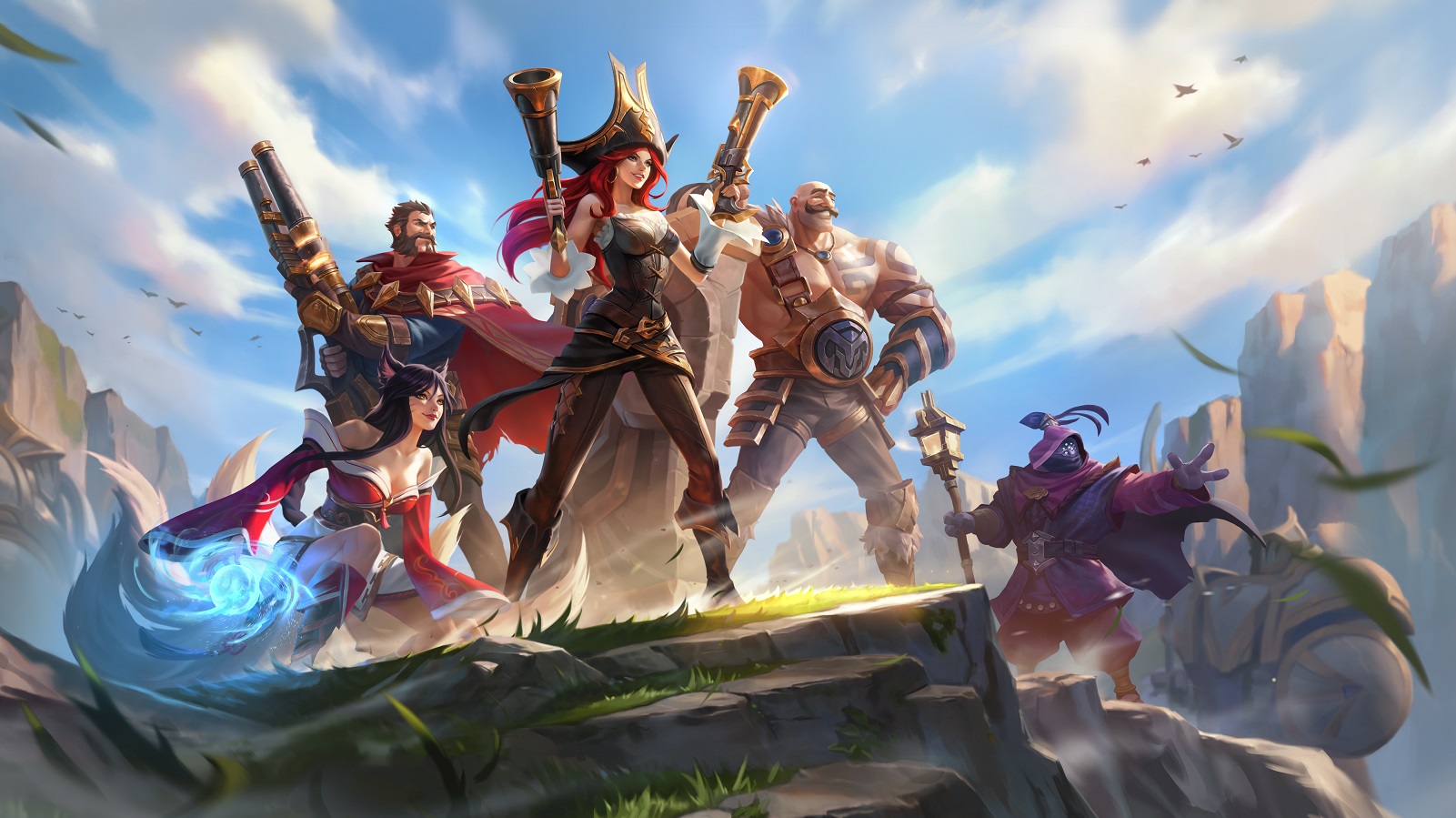
The big differences: display and battery
As you’d imagine, one of the bigger differences in playing is in the screen size – but playing on the iPhone 6S’ chunky-bezeled display isn’t as cramped as you’d think.
To be clear, you will be playing with less screen area on the iPhone 6S’ 4.7-inch HD Plus (1334 x 750) resolution LCD display compared to the iPhone 12 Pro’s 6.1-inch Full HD Plus (2532 x 1170) resolution OLED panel. That didn’t play nearly as big a factor in the game as skill and muscle memory, though: I didn’t accidentally hit the wrong button because they were too close together, and Wild Rift’s touch recognition is admirable for recognizing what I was trying to press.
(Did I ever press the wrong button? Yes – but only was because I was switching between phones and the difference in screen size had me over- or undershooting a button, which isn’t an issue most players will run into.)
Of course, that extra display space is a luxury, especially to be able to see more of what's going on. Since the game’s graphical layout scales to screen size, it’s not like I got wider peripheral vision for an in-game advantage; rather, everything was a little bigger, allowing me to survey more of the main screen and mini-map at once, both of which can quickly become cluttered with icons, health bars, and effects.
To wit, playing on the iPhone 12 Pro’s 6.1-inch screen was nicer than the iPhone 6S’ 4.7-inch display, but playing on the Asus ROG 5’s 6.8-inch screen was even better (below).
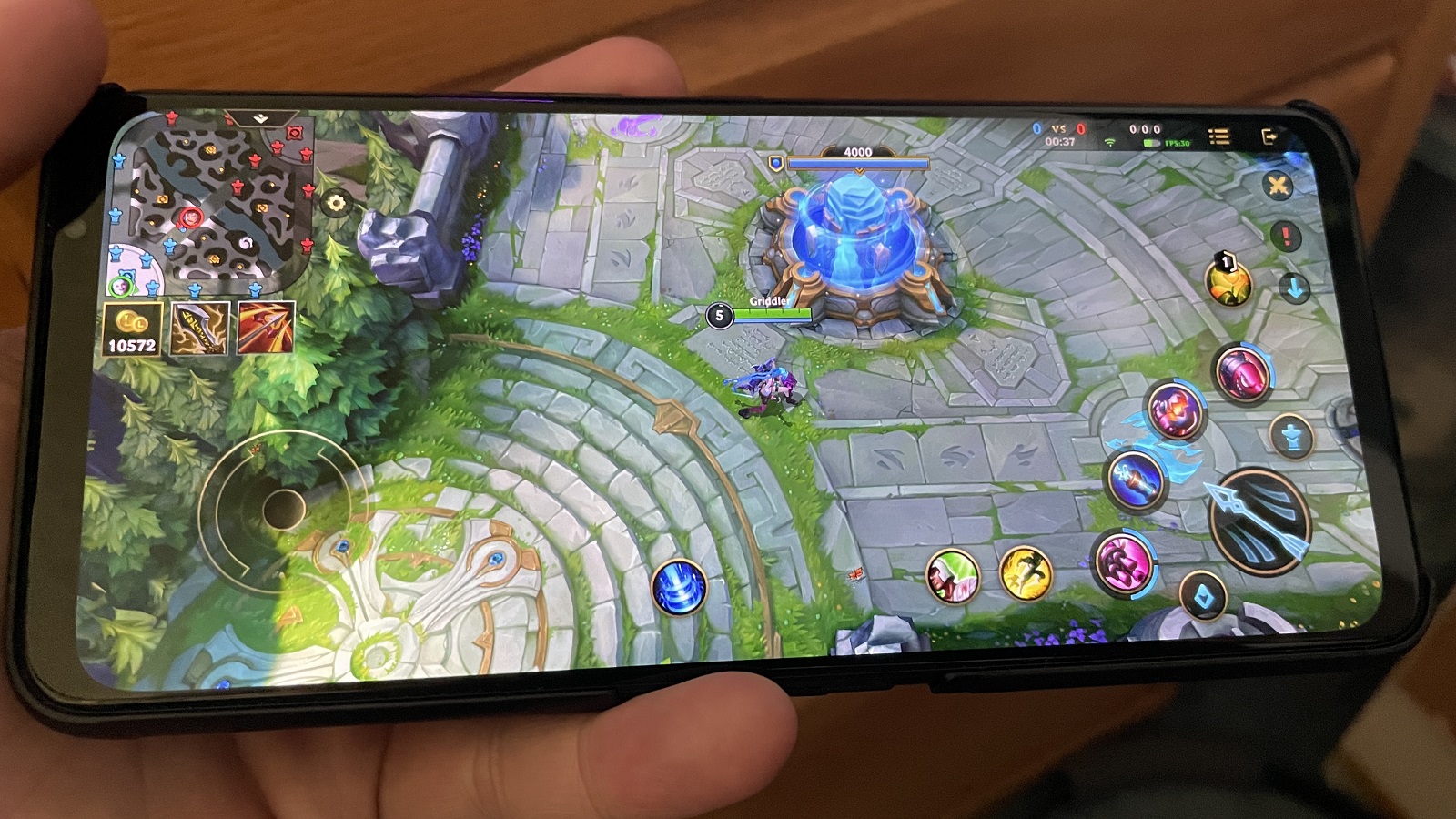
And thankfully, that difference in resolution – crudely, the sharpness of the picture – didn’t matter, and all the minute details and text were replicated virtually identically on the highest and lowest spec (aside from the top-end phones’ aforementioned smoother graphics). You won’t be at a disadvantage playing this game on a minimum spec.
The huge difference between the two – more than anything else we saw – was battery.
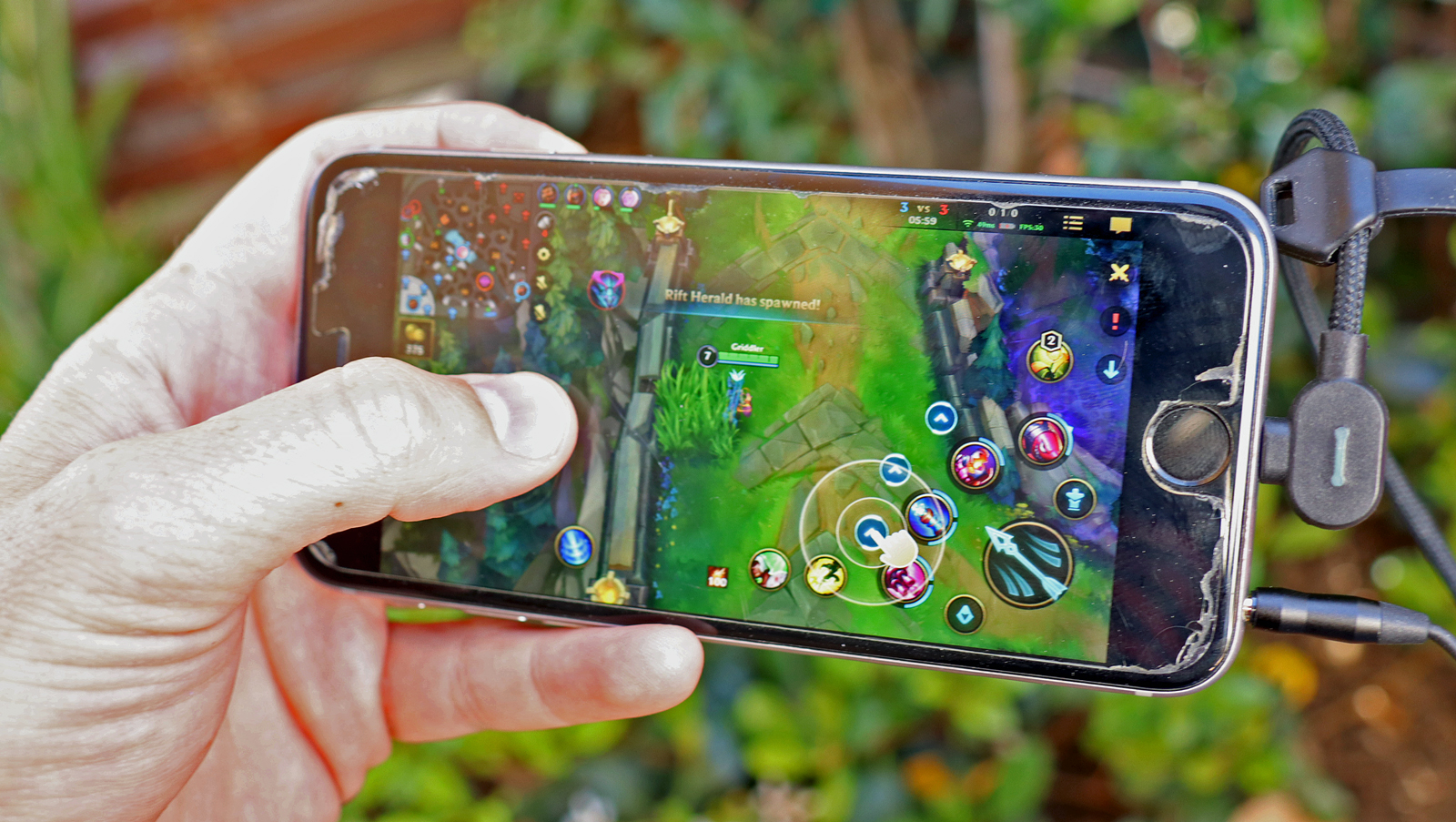
The iPhone 6S packs a 1715mAh battery, while the iPhone 12 Pro has a 2815mAh battery. That capacity difference is affected even more by how much more efficient the newest phone is at rendering graphics or watching media.
Playing a full match on the iPhone 6S churned through 20% battery at the least, and that’s in the best of conditions. When we were tethering (to link up with speedy 5G signal routed through another phone), we started a match at 35% and got down to 1% around 20 minutes into a match, forcing us to scramble for a battery pack to keep playing. That’s abysmal for anyone on the go.
The iPhone 12 Pro, on the other hand, dropped 3-4% during a 16-minute match, which is about the same as the battery drain on a 10-minute match for Call of Duty: Mobile.
Obviously, there’s a lot more going on than a simple difference in capacity, including efficiency in the newer phone and newer software tuned to the latest devices. The 6S model we tested is also older, with a ton of mileage on its battery (88% Maximum Capacity, according to Battery Health readings) that a new 6S fresh out of the box may not have.
iPhone battery capacity and efficiency varies among phones, but in general, newer models will drain less battery with each match. There are ways around this, of course, with portably battery packs and recharging not as much an issue in a lockdown environment that sees many people staying closer to home (and power plugs). What’s most crucial to players holding on to old iPhones: your gaming experience won’t be too different from those who have paid top-dollar for new phones.
Or to put it another way, playing on an iPhone 6S isn’t the reason you keep losing. Take it from us, who are losing plenty on our iPhone 12 Pro.
- Stay on top of tech news with the TechRadar newsletter

David is now a mobile reporter at Cnet. Formerly Mobile Editor, US for TechRadar, he covered phones, tablets, and wearables. He still thinks the iPhone 4 is the best-looking smartphone ever made. He's most interested in technology, gaming and culture – and where they overlap and change our lives. His current beat explores how our on-the-go existence is affected by new gadgets, carrier coverage expansions, and corporate strategy shifts.